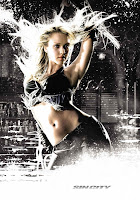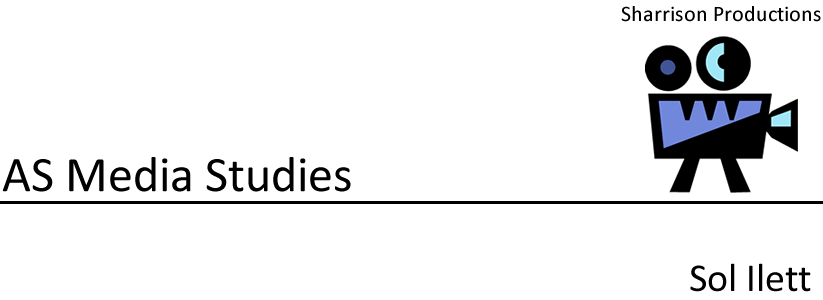After looking through our initial ideas, we have decided that we where looking for something more different rather than a horror film.We decided that "Kool Kids" didn't appeal to a broad enough audience.
After viewing other comedy films we noticed that opening scenes didn't always have dialogue. We felt that all the initial ideas would be far too complicated and comedy films are basic but affective.
After a discussion, with feedback from the other groups, we have decided to use the below idea:
Our new idea which we are yet to name, is set in a city at sunset. A teenage boy is running away from a very angry man indicating he has done something wrong. Whilst running away, the teenager encounters unfortunate comedic events like stepping in dog mess, tripping over bins and other various incidents. We will use many different types of camera angles and shots throughout this scene. The penultimate shot shows the teenager, after finding a passing garden to hide in, not knowing where the angry character is. The final shot shows the teenager relax, after he has found a place to hide, sitting against the garden wall breathing deeply. Then his phone rings which blows his cover as the angry man hears it and knows where he is. That is where the scene will end. The titles will be showing during the running footage.
Overall, we believe this type of comedy will appeal to a wider audiece, and this will help us achieve the best video possible.
Friday, 15 October 2010
Thursday, 14 October 2010
Analysis of Lighting - Sin City
Throughout the film low light is used to create a dark atmosphere. The film is shot in black and white but certain features on characters and objects are emphasised using editing techniques, as a bright colour. The film shows good examples of different lighting methods:

Keylight - as the name suggests, is usually the brightest and the most influential.

Backlight - helps counteract the affect of the keylight, thus making the character/object look more rounded.
Filler light - helps to soften the harshh shadows that the use of key lights create. These may be more than one filler light.
Underlighting - is when the main source of lighting comes from below the subject. This tends to have distorting affects on the character/object that is being lit, and is often used in forror films.
Top lighting - is when the mian source of lighting comes from above, highlighting the features of a characters - it can be used to create a glamorous look in a star.
Back lighting - is when the light source is behind the subject, if little or no other lighting, silhoettes are created.
Friday, 8 October 2010
Initial Ideas
Today we presented three initial ideas for our final piece. We then received feedback from the rest of our class. Below are the three ideas we wanted to produce a opening scene for:
Kool Kids
Genre: Comedy/Action
Kool Kids
Genre: Comedy/Action
Location: Hunstanton
Storyline:
• 5 Characters skive school and head over to one of the characters house
• After drinking a bit, they decide to drive to Hunstanton
• Without realising, one of the characters goes missing while in Hunstanton
• The film will show the rest of the characters search for missing person and what happens during the search
The End
Genre: Horror
Location: Woods
Storyline:
Haunted Woods at night, people camping, each character has a scene on their own in the forest.
They then end up disappearing, until the end of the film when the remaining character finds all of
them possessed.
Haunted Woods at night, people camping, each character has a scene on their own in the forest.
They then end up disappearing, until the end of the film when the remaining character finds all of
them possessed.
The opening scene will be the characters arriving at the woods, telling each other stories that
they have heard about the woods. There are then small snap shots from the distance looking
like they are being watched.
they have heard about the woods. There are then small snap shots from the distance looking
like they are being watched.
Stanton
Genre: Comedy/Mystery Horror
Location: Peterborough to Hunstanton
Storyline:
4 main characters, go on a day out to Hunstanton. Its planned to be a normal day out but
something goes wrong...The opening scene is the 4 of them getting ready for the day, then shows them meeting up and
shows the car journey there. As they arrive in Hunstanton the sound of a printer fades in, then
the shot fades into a printing factory showing a headline being printed.
shows the car journey there. As they arrive in Hunstanton the sound of a printer fades in, then
the shot fades into a printing factory showing a headline being printed.
4 PEOPLE GO MISSING IN SEASIDE TOWN
Then the shot fades out into a black background.
Friday, 1 October 2010
Movement Shots
Tracking shot- This is a simple back and forward camera movement. A doller or dolly and tracker are often used for this shot so that the camera shot is steady and smooth. Tracking in draws the audience to the character but tracking out often indicates that the scene is over.
Side-ways tracking shot (crab shot) - Often used to follow the movement of a character or object so that the audience can keep up with the action on screen.
Tilt shot - The simple move of a camera upwards or downwards on a axis. An upwards shot is often used by directors to create a sense of height or power. Tilt shot can be used with a point of view shot to follow the characters view of action.
Zoom shot - A zoom can be used as an alternative to a tracking shot if the user doesn't have the equipment to use a tracking shot. This creates a movement towards and into the character. When this shot is done well, it can replace a tracking shot.
Arc shot - When the camer is moved round a character or object in either a full or half of a circle. It enables the viwers to see the reaction and facial expression of the character/s. This shot often increases the intensity of the narative.
Crane shot - When the camera is attached to a crane enabling the director top create a virticle camera shot.
Panning shot - When a camera is attached to a tri-pod and moved left to right, or right to left. it is often used to follow a moving object or character in a frame. This shot is also often used with a point of view shot.
Side-ways tracking shot (crab shot) - Often used to follow the movement of a character or object so that the audience can keep up with the action on screen.
Tilt shot - The simple move of a camera upwards or downwards on a axis. An upwards shot is often used by directors to create a sense of height or power. Tilt shot can be used with a point of view shot to follow the characters view of action.
Zoom shot - A zoom can be used as an alternative to a tracking shot if the user doesn't have the equipment to use a tracking shot. This creates a movement towards and into the character. When this shot is done well, it can replace a tracking shot.
Arc shot - When the camer is moved round a character or object in either a full or half of a circle. It enables the viwers to see the reaction and facial expression of the character/s. This shot often increases the intensity of the narative.
Crane shot - When the camera is attached to a crane enabling the director top create a virticle camera shot.
Panning shot - When a camera is attached to a tri-pod and moved left to right, or right to left. it is often used to follow a moving object or character in a frame. This shot is also often used with a point of view shot.
Camera Shots
Establishing Shot/Extreme Long Shot (ELS) - This shot is to set the scene and show the audience where the character is. This shot shows the whole figure and there surroundings.
Long Shot (LS) - This shot also shows alot of the scene behind the character, but the camera focuses more on the character rather than the surroundings. This shot sets the scene but also shows what the character is doing. This is also a full body shot.
Medium Long Shot (MLS) - This shot is closer than a long shot, and still shows the whole figure of the character. This shots does the same as a long shot but focusses more on the character. Often the surroundings are distorted or the shot does not show as much focus to the background scene.
Medium Shot (MS) - The camera shot shows the character from the waiste up. Its often used to show more than one character in a scene.
Medium Close Up (MCU) - This shot is usually used to show two characters talking. It is shot from the mid-chest to the top of the head. This shot shows the audience alot more detail about the character.
Close Up (CU) - This shot shows head and shoulders. The shot is often very detailed to shot emotion and reactions. It is often used in films to build up tension.
Extreme Close Up (ECU) - This shot is used to show a characters emotions, feelings or reaction. It either shows just the face or part of the face.
Long Shot (LS) - This shot also shows alot of the scene behind the character, but the camera focuses more on the character rather than the surroundings. This shot sets the scene but also shows what the character is doing. This is also a full body shot.
Medium Long Shot (MLS) - This shot is closer than a long shot, and still shows the whole figure of the character. This shots does the same as a long shot but focusses more on the character. Often the surroundings are distorted or the shot does not show as much focus to the background scene.
Medium Shot (MS) - The camera shot shows the character from the waiste up. Its often used to show more than one character in a scene.
Medium Close Up (MCU) - This shot is usually used to show two characters talking. It is shot from the mid-chest to the top of the head. This shot shows the audience alot more detail about the character.
Close Up (CU) - This shot shows head and shoulders. The shot is often very detailed to shot emotion and reactions. It is often used in films to build up tension.
Extreme Close Up (ECU) - This shot is used to show a characters emotions, feelings or reaction. It either shows just the face or part of the face.
Subscribe to:
Comments (Atom)


